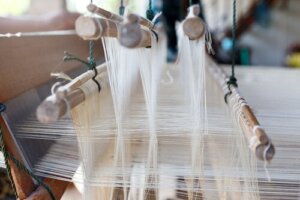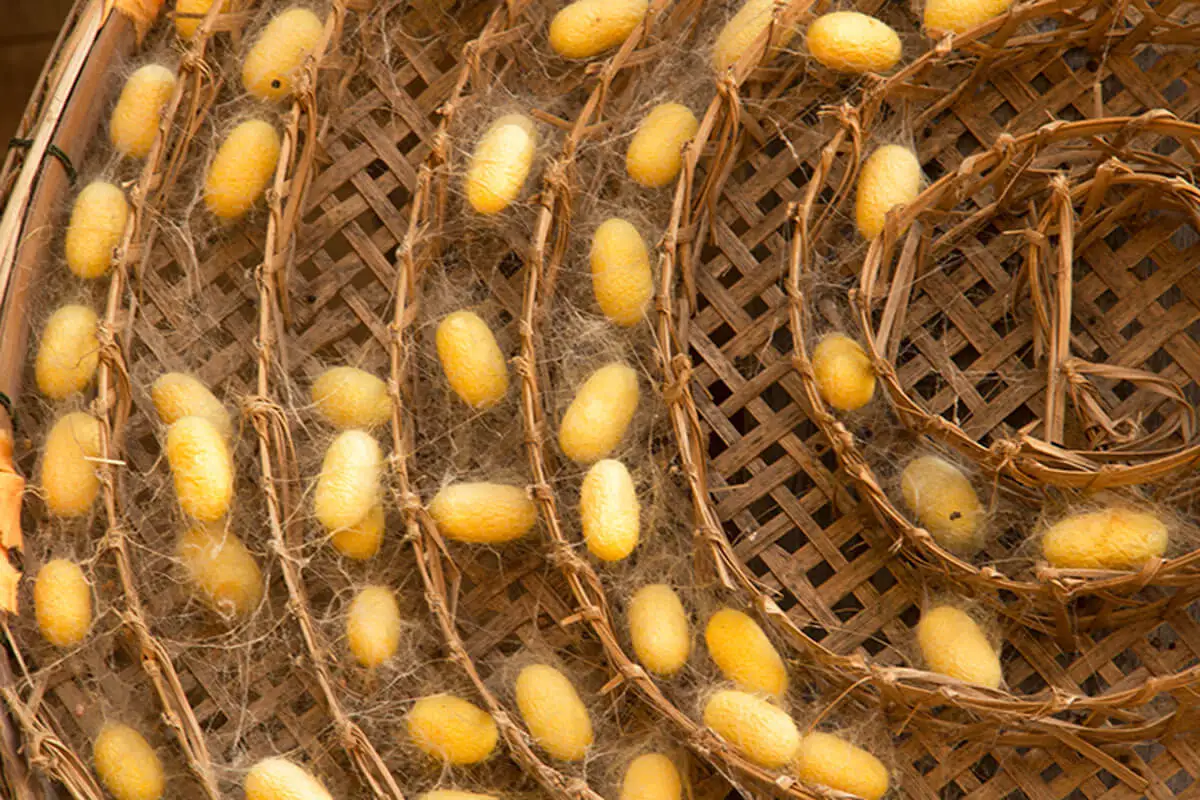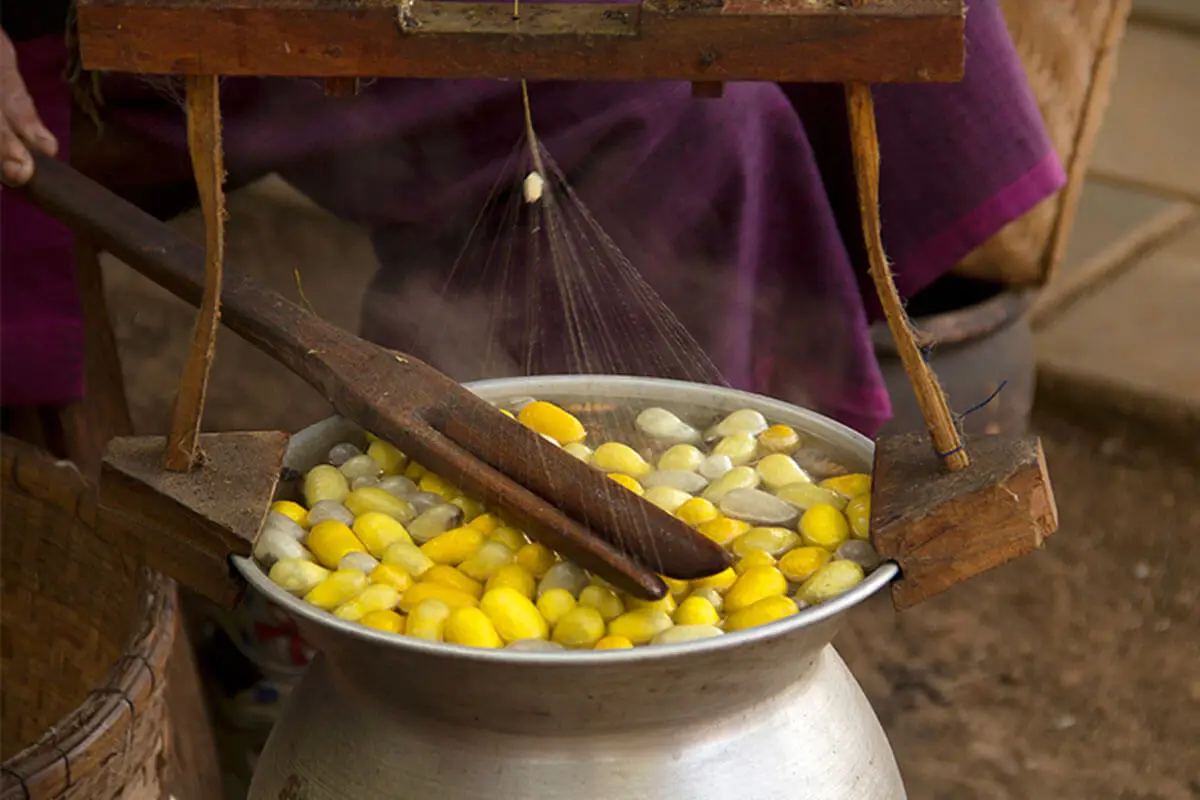From Cocoons to Your Clothes: How Silk Is Made

We all know what silk is, that beautiful, shiny, and soft material. However, few people know how silk is made. Well, let’s find out together! Learn about the process that makes it possible for you to enjoy such elegant garments, from the moment the silkworms leave their cocoons.
The production of this natural fiber is carried out either in an artisanal or industrial way, and always requires teamwork between humans and insects. The former provide their food and the latter are dedicated to producing new worms and lots of silk. Read on to learn more!
Where does silk come from?
Silk comes from the cocoons left by silkworms (Bombyx mori L.), also known as the caterpillar of the domestic silk moth. These insects feed exclusively on the leaves of the mulberry tree.
As described in research articles, this is a multipurpose plant with outstanding nutrients for silkworms. From it, they obtain protein and enough energy to create their cocoons. It’s also used to feed other species such as cattle.
The silk comes out of very small holes that the worms have in their heads and is the product of their sericogenic glands. When this fiber comes out and comes into contact with the air, it solidifies and creates very fine rings that, at the end of the day, give shape to the popular silk cocoons. These are composed of fibroin and sericin.
In particular, the species Bombyx mori L. makes its cocoons by reeling itself around in circles, because it’s when they’re completely enclosed in this cocoon that they begin their metamorphosis to become butterflies. To give you an idea, each cocoon holds between 1000 and 1500 meters (3300 to 5000 feet) of silk, which is collected by artisans who continue the process from there on.

How silk is made
Now we’ve understood where silk comes from, it’s time to say how it’s made. Once the worm makes its cocoon, from now on it’s human hands that provide continuity. This activity is known as silk farming. It includes not only the raising of the worms, but also an agricultural forestry stage in which the mulberry tree is cultivated, and a transformation stage, in reference to the processing of the silk.
This practice has been historically carried out in countries such as Mexico. However, considering that mulberry, the exclusive food of silkworms, grows in tropical and arid zones, silkworms are also cultivated in countries such as Colombia and others in the American continent.
Breeding and care of silkworms
Breeding of these insects is carried out in closed enclosures to provide better care for the worms. In suitable areas, so-called plastic forests are placed, structures in which the worms can attach their cocoons more easily.
Collection and selection of cocoons
Every three days, which is the time each worm takes to make its cocoon, the growers collect the forests. They then sort them into two categories: first-quality cocoons, which have a continuous filament, and second-quality cocoons, which, for various reasons, are broken.
They also identify a third category known as the flock, which is a kind of wool that coats the cocoons and is too soft, so it’s often used to make delicate garments such as baby clothes.
Reeling and dyeing of silk

The first cocoons will then go through another process known as reeling, in which they’re boiled in hot water. This makes it easier to find the initial filament of each cocoon, which can vary in length – between 600 to 2000 meters (2000 to 6500 feet) – to start spinning the fiber. Subsequently, the silk goes through a process in which its color is changed.
Depending on the artisans or manufacturers, natural dyes are used to color the fibers. This process, depending on the desired shade, can take several days.
Spinning and weaving the silk
Although it sounds like the same process, it isn’t. The silk is first passed through a spinning wheel to be spun into skeins, which are then used to weave the desired garments or utensils. In the first step, the oldest and most traditional way of spinning is with a spinning wheel. After each thread is passed through it, it’s completely flat and ready to be woven.
Once it’s woven, it can be given different finishes: satin, smooth, or open being the most common. Finally, the whole piece is printed.
Besides clothes, what else is made from silk?
Silk sheets, silk shirts, and religious robes are some of the most common garments made from this natural fiber. However, its use goes beyond clothing. Silk is used to make handmade fabrics, carpets, rugs, and even curtains. In fact, it’s a material that’s often used in special trousseaus for weddings and christenings.
Although silk culture is a practice that doesn’t require much investment and is considered economical for those who perform it, the garments and utensils made with silk are of high economic and social value. This isn’t surprising, as converting this raw material from the moment it’s expelled from the worms is a true work of art.
Its value is historical, because, in ancient times, there was a vast silk market in which this material was exchanged for food and other valuable items in early civilizations.
All cited sources were thoroughly reviewed by our team to ensure their quality, reliability, currency, and validity. The bibliography of this article was considered reliable and of academic or scientific accuracy.
- Martín, G.J.; Noda-Leyva, Y.; Pentón, G.; Garcia, D.; Garcia, F.; González-García, E.; Ojeda, F.; Milera-Rodríguez, M.; López-Vigoa, O. Ly, J.; Leiva, L. & Arece-García, J. (2007). La morera (Morus alba, Linn.): una especie de interés para la alimentación animal. Pastos y Forrajes.
- Ortega, A.; Jorge, M.; Monter, V.; Alejandro, M. Maza, V.; Aarón, M.; Menchaca, M.; Martínez, J.; Ehsan, M. & Lara-Viveros, F. (2012) Manual de Sericultura en Hidalgo: Principios básicos.
This text is provided for informational purposes only and does not replace consultation with a professional. If in doubt, consult your specialist.








